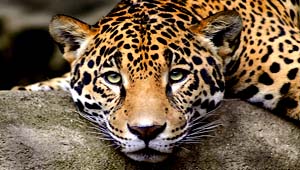- Home
- Wildlife Nepal
- Royal chitwan National Park
ROYAL CHITWAN NATIONAL PARK AREA (932 SQ. KMS.)
 |
Location:
Royal Chitwan National Park, the oldest national park in Nepal, is situated in the subtropical inner Terai lowlands of South-Central Nepal. The park was designated as a World Heritage Site in 1984.
Features:
The park covers a pristine area with a unique ecosystem of significant value to the world. It contains the Churiya hills, ox-bow lakes and flood plains of Rapti, Reu and Narayani Rivers. Approximately 70% of the park vegetation is sal forest. The remaining vegetation types include grassland (20%), riverine forest (7%), and sal with chirpine (3%), the latter occuring at the top of the Churiya range. The Saccharun species, often called elephant grass, can reach 8 m. in height. The shorter grasses such as Imperata are useful for thatch roofs.
There are more than 43 species of mammals in the park. The park is especially renowned for the endangered one-horned rhinoceros, the tiger and the gharial crocodile along with many other common species such as gaur, wild elephant, four-horned antelope, striped hyena, pangolin, Gangetic dolphin, monitor lizard and python. Other animals found in the park include the sambar, chital, hog deer, barking deer, sloth bear, palm civet, langur and rhesus monkey. Ther are over 450 species of birds in the park. Among the endangered birds are the Bengal florican, giant hornbill, lesser florican, black stork and white stork. Common birds seen in the park include the peafowl, red jungle fowl, and different species of egrets, herons, kingfishers, flycatchers and woodpeckers. The best time for bird watching is March and December. More than 45 species of amphibians and reptiles occur in the park, some of which are the marsh crocodile, cobra, green pit viper and various species of frogs and tortoises. The park is actively engaged in the scientific studies of several species of wild fauna and flora.